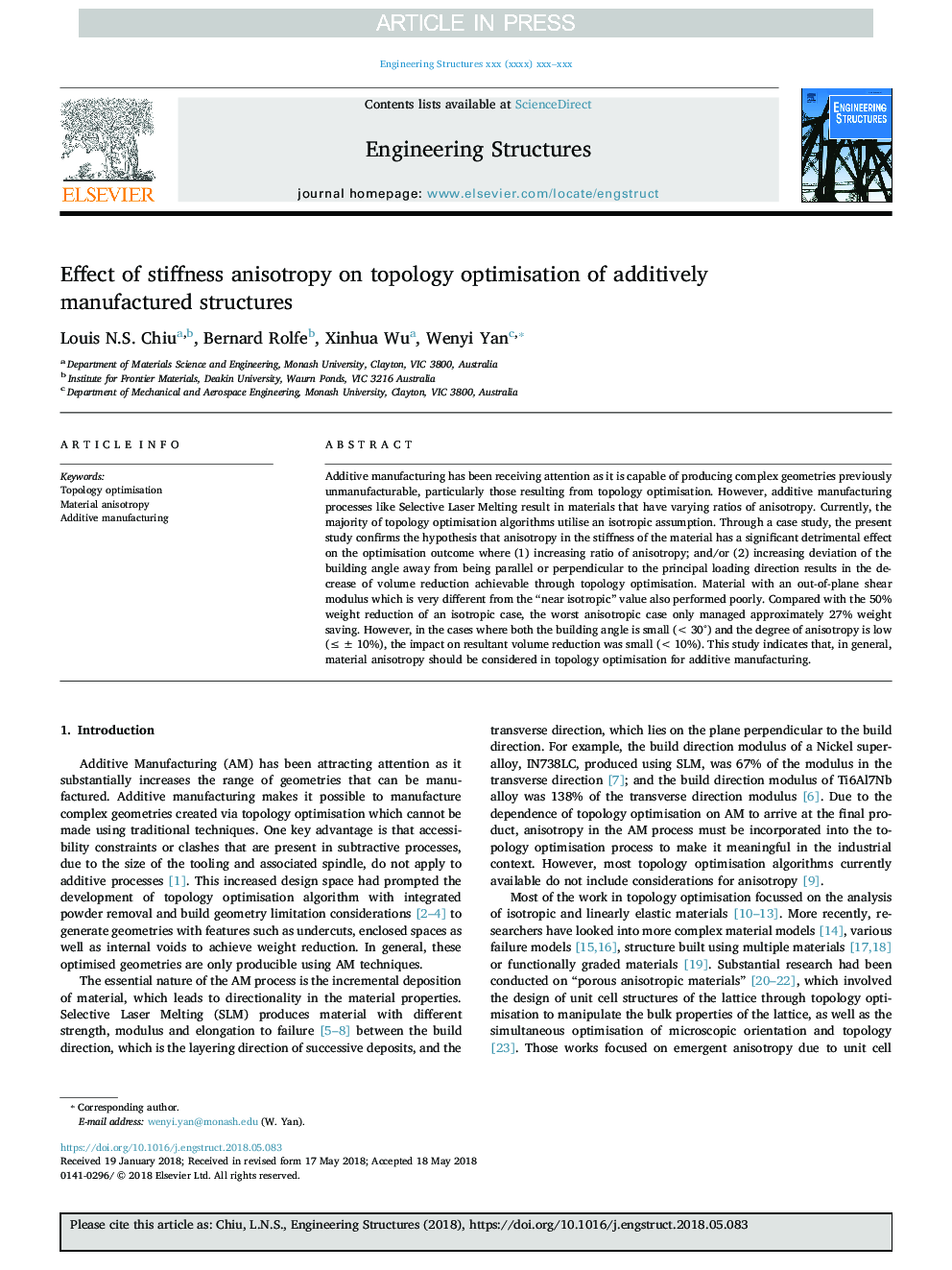| Article ID | Journal | Published Year | Pages | File Type |
|---|---|---|---|---|
| 6736525 | Engineering Structures | 2018 | 7 Pages |
Abstract
Additive manufacturing has been receiving attention as it is capable of producing complex geometries previously unmanufacturable, particularly those resulting from topology optimisation. However, additive manufacturing processes like Selective Laser Melting result in materials that have varying ratios of anisotropy. Currently, the majority of topology optimisation algorithms utilise an isotropic assumption. Through a case study, the present study confirms the hypothesis that anisotropy in the stiffness of the material has a significant detrimental effect on the optimisation outcome where (1) increasing ratio of anisotropy; and/or (2) increasing deviation of the building angle away from being parallel or perpendicular to the principal loading direction results in the decrease of volume reduction achievable through topology optimisation. Material with an out-of-plane shear modulus which is very different from the “near isotropic” value also performed poorly. Compared with the 50% weight reduction of an isotropic case, the worst anisotropic case only managed approximately 27% weight saving. However, in the cases where both the building angle is small (<30°) and the degree of anisotropy is low (â¤Â±10%), the impact on resultant volume reduction was small (<10%). This study indicates that, in general, material anisotropy should be considered in topology optimisation for additive manufacturing.
Related Topics
Physical Sciences and Engineering
Earth and Planetary Sciences
Geotechnical Engineering and Engineering Geology
Authors
Louis N.S. Chiu, Bernard Rolfe, Xinhua Wu, Wenyi Yan,
